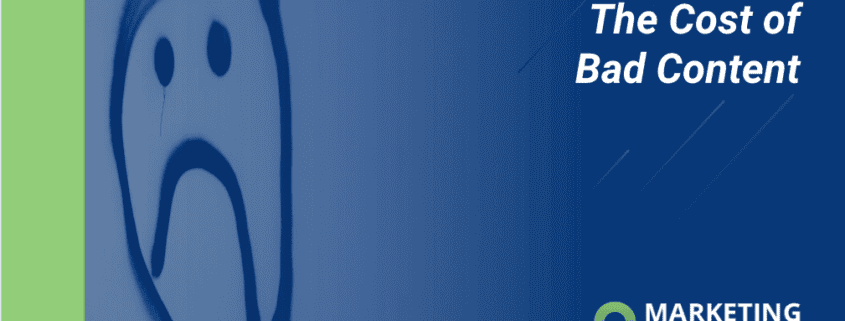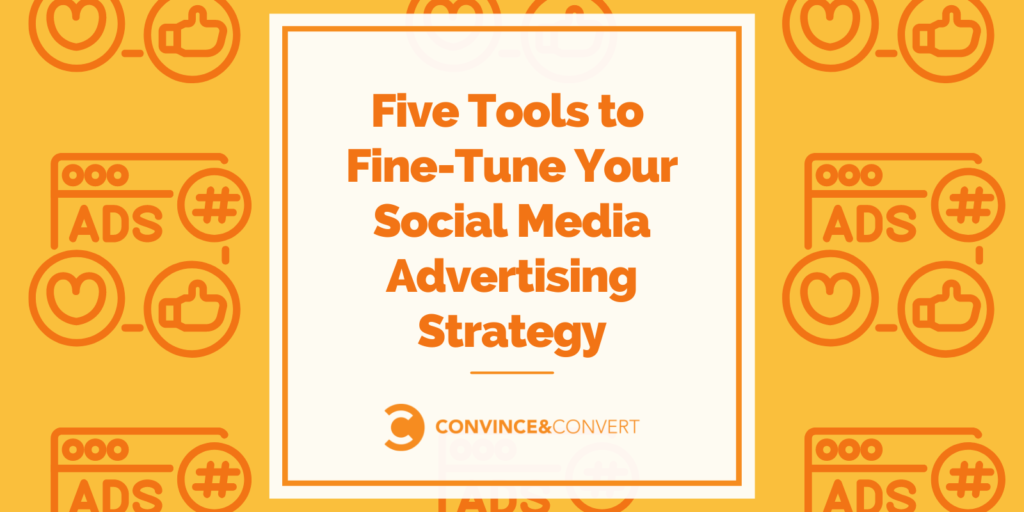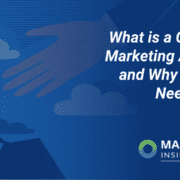The Cost of Bad Content Marketing
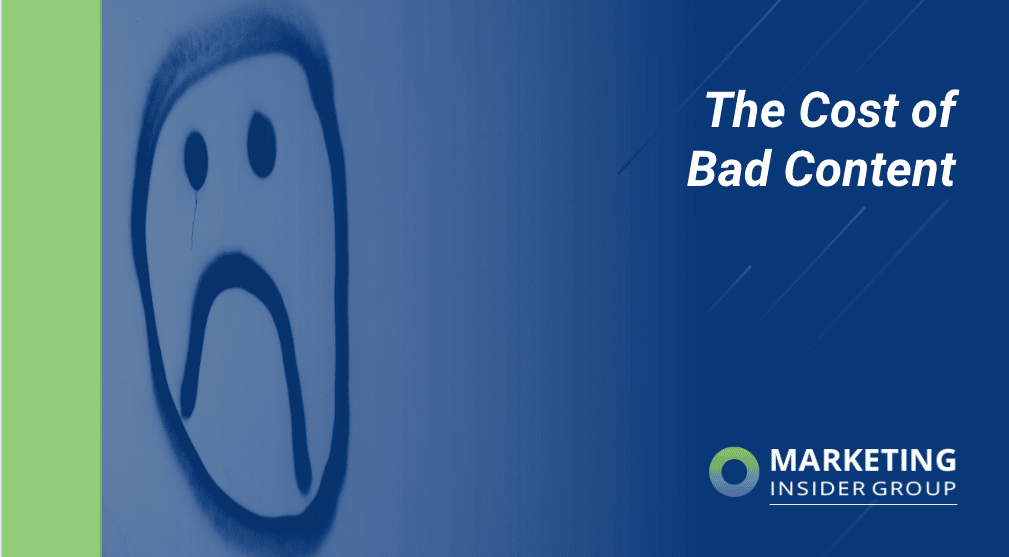
Every company is marketing with content, but not every company is doing content marketing. The difference between the 2 is often just straight up bad content. And there’s a lot of it. But what is the cost of all this bad content?
According to eConsultancy, bad content costs B2B companies $50 billion. And that’s just B2B companies. Consumer brands make up about 40% of the economy so add them into the mix and we’re looking at a $90 Billion problem. That’s a lot of Benjamins.
In this post, we’ll dive a little deeper into the cost of bad content, cover the reasons why so much bad content exists, and how we can create content that actually reaches, engages and converts new customers to our business.
Quick Takeaways:
- Bad content costs companies billions of dollars every year
- Good content is credible, valuable and formatted for an engaged experience
- Bad content erodes your credibility and pipeline by creating barriers to trust and engagement
- Creating a customer-focused content strategy provides the alignment required for more, higher-quality content and better ROI
What is Good Content?
High quality content accomplishes the goal of answering a customer question with authority and credibility. For example, I’ve written more than 1,000 articles here on this blog. And while quantity certainly doesn’t mean that what I write is any good, practice does help.
Good content not only serves customers, it serves the business as well. Quality content marketing reaches, engages and converts new customers based on trust built through a quality content marketing strategy.
We define quality content marketing as:
- Customer-focused
- Consistent
- Comprehensive
- Cost-effective
Here are some additional components of good content before we dive into the bad.
Good Content Is Credible
When I trained hundreds of writers at SAP to publish on our blog, I told every one of them that the first thing they ever write may not be very good, but the hundredth will be awesome. Some of the things I trained them on was to build credibility over time by being a curious student of their topic, sharing what they learned, and what they thought about what they learned on their topic of interest.
Good Content Shows Interest or Passion
One of my favorite content marketing quotes is from Mark Twain who said “write about what you know.” Ok so maybe good content doesn’t need to come from a deep-seeded passion for your topic. I struggled to have passion for Cloud Computing. But I found a way to make it interesting.
Good content should convey a natural curiosity to answer the question and requires at least some level of interest on the writer’s part.
Good Content Delivers On Search Intent
There’s been a lot of talk lately about writing for humans vs writing for people. And while we use SEO to research topics, we write for people to answer their search intent. So we imagine we’re standing with someone in real life, and when that person asks a question, we try and make sure our content answers that question as well as possible.
I don’t believe even the best AI can do that yet!
Good Content Is Only As Long As It Needs To Be
We get a lot of questions about content length and quality.
How long should a blog post be? Only as long as it needs to be to answer the question!
Our research concluded that under 1,000 words and Google is less likely to show your answer. Longer content is more likely to rank but when time and budget is limited, it makes the most sense to publish more often than to publish longer content.
Good Content Is Formatted For Viewer Engagement
Do you like to read 12 sentence paragraphs where the sentences are 3 lines long, written like a PhD student? Probably not. We use a checklist to write what we think is a perfect blog post format to try and use white space as much as possible. To use summary points in headlines, bullets and short sentences.
Some other format considerations:
- 3-5 key takeaways
- Visuals that add to the content
- Videos
- Links to internal and external sources
- Active vs passive voice
We use the following checklist for every single piece of content we deliver for our clients. Feel free to download for your own use or send me a quick message and I’ll send you a google sheet you can use.
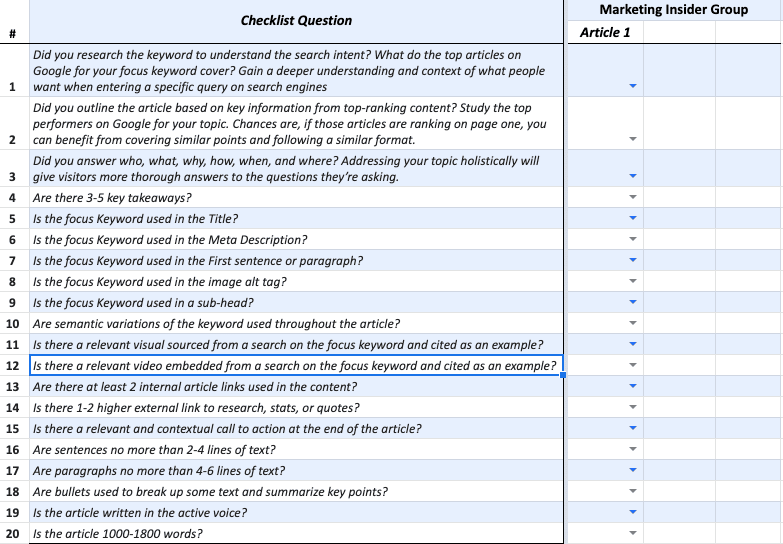
What is Bad Content?
Most content stinks because it focuses on promoting your business or your point of view. There’s a name for people that make everything all about themselves. (Message me if you don’t know it!)
Want to see some bad content:
Bad content is overly promotional, self-serving, poorly-written, duplicative, un-original, or hard to read.
And yet the majority of people rate their own content as better than average. This is called illusory superiority, a form of cognitive bias that makes most of us think we are better than average when that is mathematically impossible.
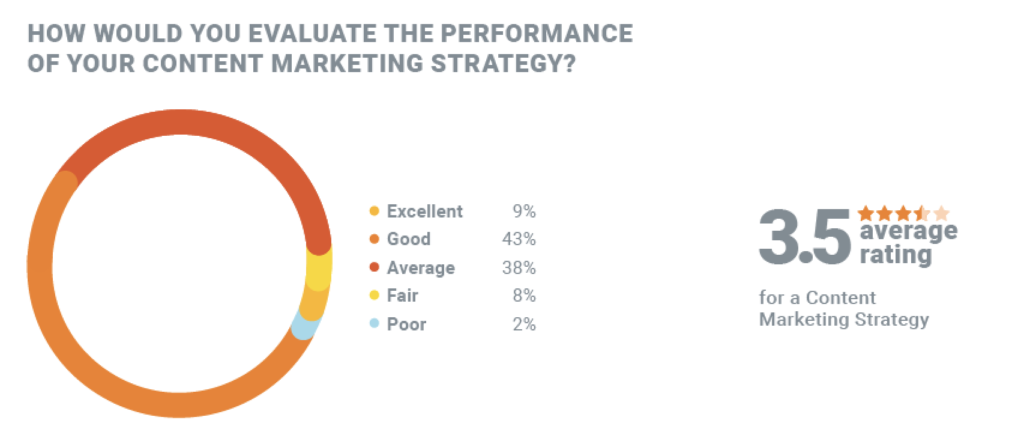
I have said that the biggest mistake most content marketing makes is trying to sell in your content marketing. But actually, the biggest mistake is creating something that never gets used at all.
What is The Cost of Bad Content?
According to Forrester, 60-70% of content goes completely unused!
That’s the worst kind of content because it never even gets the chance to be judged as bad. You would be better off throwing your budget in the trash and going out to lunch for the whole day every day. OK, so take your marketing or communications budget, multiply by 60%, and that is the cost of bad content.
I’m totally serious. When I was at SAP, I asked our marketing team to show me how many demand generation campaigns delivered at least 1 lead. The answer: 44%. That’s right nearly 60% of our demand generation campaign budget was for campaigns that didn’t produce a single lead. How does that happen? (Answer below).
The success I achieved there was not because I was above-average in any way. I just suggested we stop doing the stuff that produced no value. And start doing the stuff that helped our customers and drove ROI. 7x ROI was the result. The average marketing campaign at SAP at the time delivered negative ROI. (I’m excluding events. SAP events were awesome ROI generators – at least at the time.)
So if 60% of the content we create never gets used, and nearly 60% of lead gen programs don’t produce a single lead, the just use my simple math above to calculate the cost of bad content.
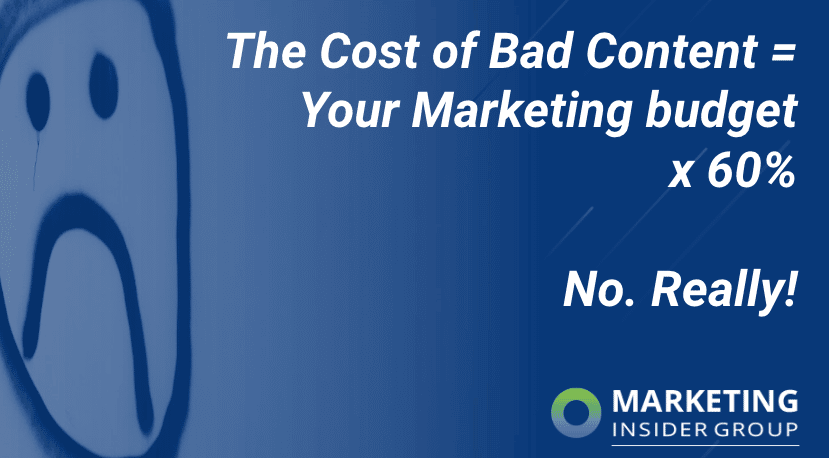
And if you think you are better than average (haha – see what I did there), you’re not! I’ve done this analysis at about a dozen companies and guess what the answer was to the question: how much content did we produce that created any value at all? The answer was an average of 40%. 60% produced zero value of any kind.
More than half of what you do is likely wasted, bad content!
Why Do We Create Bad Content That Never Gets Used?
I believe the main problem stems from the common marketing mistake of focusing on activities instead of results (my blood is starting to boil).
We create stuff because someone told us to. And that stuff is overly promotional and self-serving because that is the natural instinct of most people.
Behind every piece of bad content is an executive who asked for it!
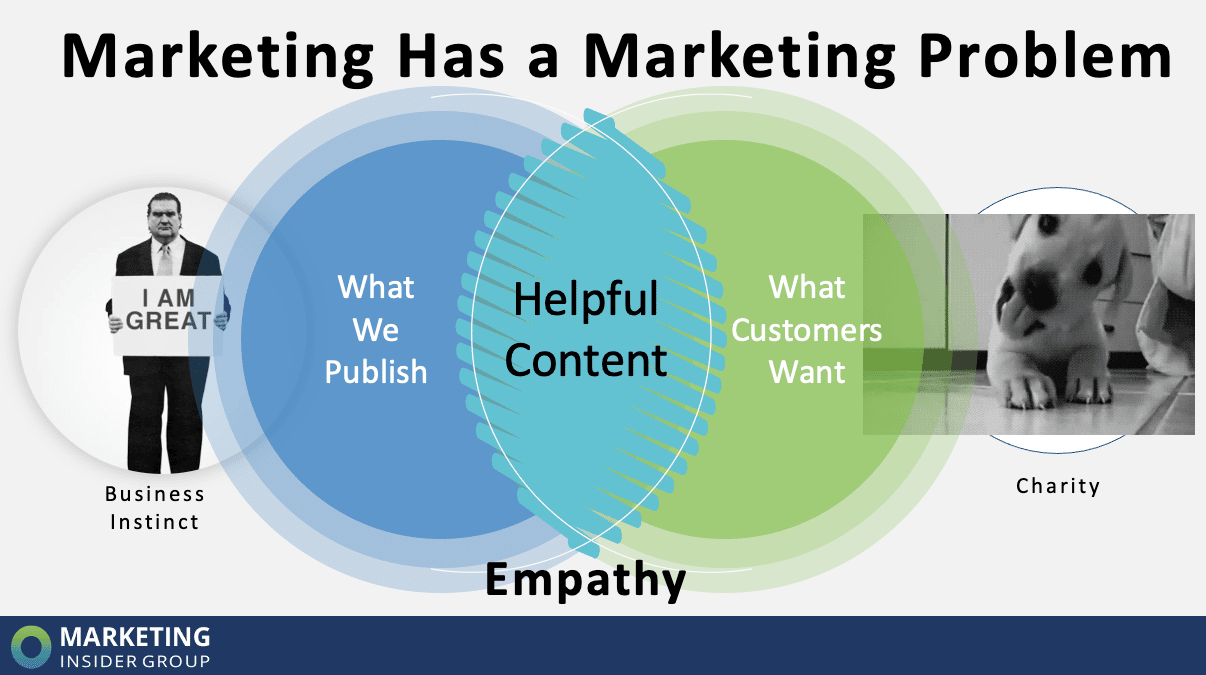
We need to resist our natural instinct to promote our business and just try and answer a customer’s honest question.
How To Create Less Bad Content
Here are some additional tips to making sure you create more, good content. That is, tips to create a higher quantity of quality content. See? This isn’t even an easy thing to say, let alone an easy thing to do!
- Train your team on what content marketing really is.
- Document your content marketing strategy to gain alignment around the objectives and support from senior executives.
- Emulate some of the best examples of quality content marketing from companies like Nutanix, Televerde, DivvyHQ and more.
- Consider mapping content to the buyer journey based on keyword / search signals.
- Invite your readers to engage more deeply through subscriptions and offers and turn your blog into a lead generation machine.
- Measure your content all the way to revenue.
- Spell stuff real good, make all the good words, and take the time it takes to write a quality piece of content.
Busting Some Myths
Finally, a couple of myths I have heard so many times I want to puke: content needs to be original and it needs to present a unique point of view. I call BS on these points because:
- A. There are no completely new thoughts. Not really. We’re all just synthesizing the data around us and some of us are more skilled than others at presenting our thoughts about this data in creative and effective ways.
- B. No one cares about your unique point of view. Answering a customer question only requires you to uniquely care about your customers. Not about yourself.
Besides, even considering whether your thought is unique or new is selfish by nature. Consider instead whether your content is helping someone!
Someone I respect more than just about anyone once said:
Be careful of clever people, saying clever things, in clever ways.
~ My Dad
Just answer the question your customers ask in a consistent and helpful way, and you will reach and engage your audience.
Start Creating More, Good Content
Check out our SEO Blog Writing Services or schedule a free consultation today to learn more.
The post The Cost of Bad Content Marketing appeared first on Marketing Insider Group.
Did you miss our previous article…
https://www.sydneysocialmediaservices.com/?p=4835

